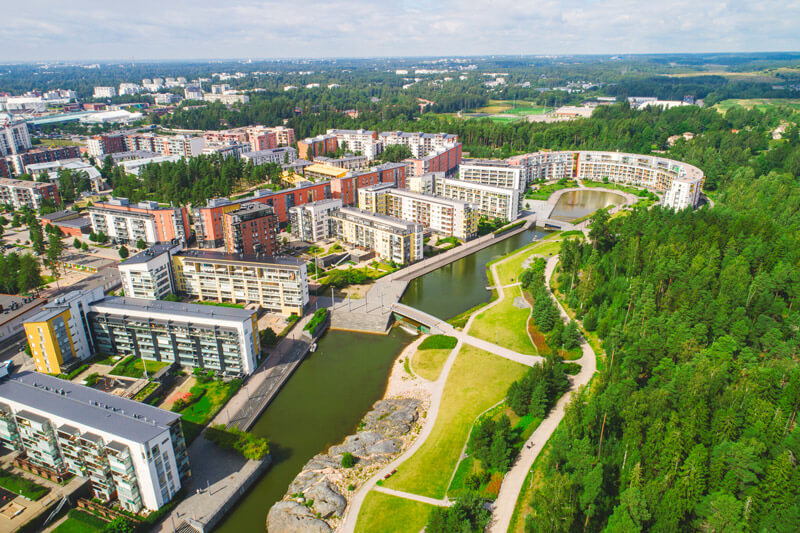Uutela Canal and Kauniinilmanpuisto represent modern environmental planning at its best. The canal does not actually lead anywhere like usual canals, but it is an impressive and interesting water design. It was built in 2006, and the park to the east of the canal was built in 2007.
The canal is approximately 45 metres at its widest point and 12 metres at its narrowest point, and it is 700 metres long. The canal is graded into three levels of water height: the southernmost end is at sea level, the middle section is three metres above sea level, and the upper section is five metres above sea level. The water depth in the central section is one metre, while the lower section at sea level is over two metres deep. Sea water is pumped to the upper section, from where it flows downwards via waterfalls to the lower section. Circulating the water prevents the water quality from deteriorating.
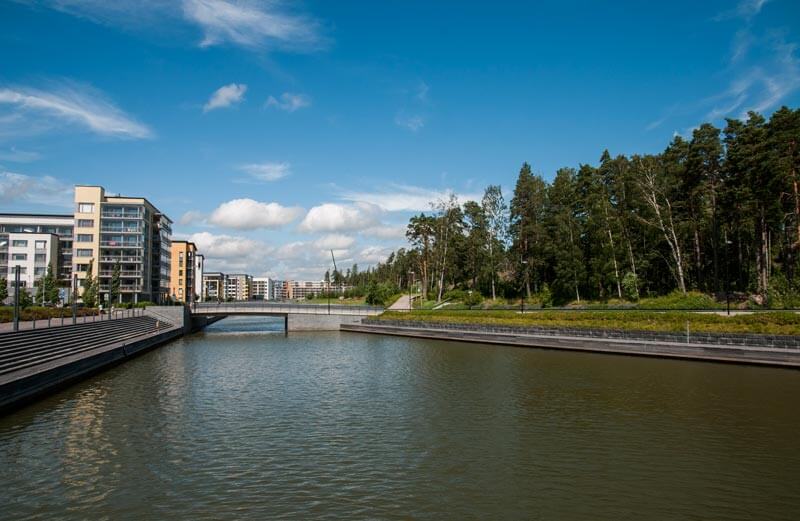

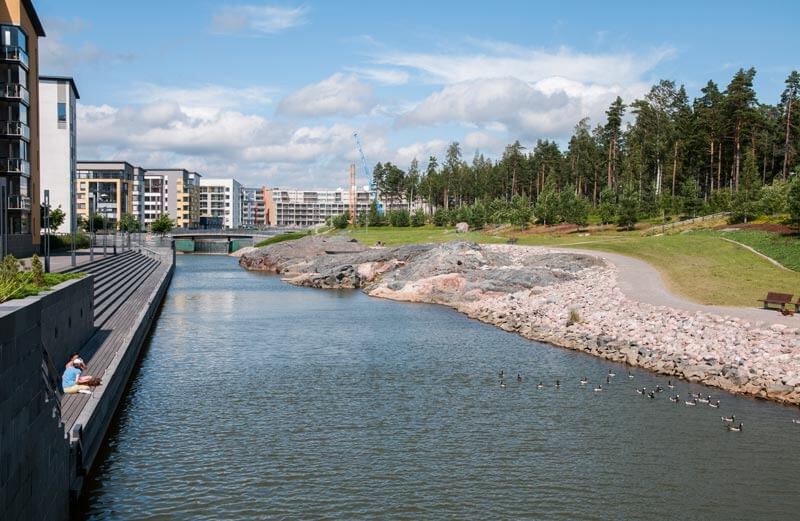
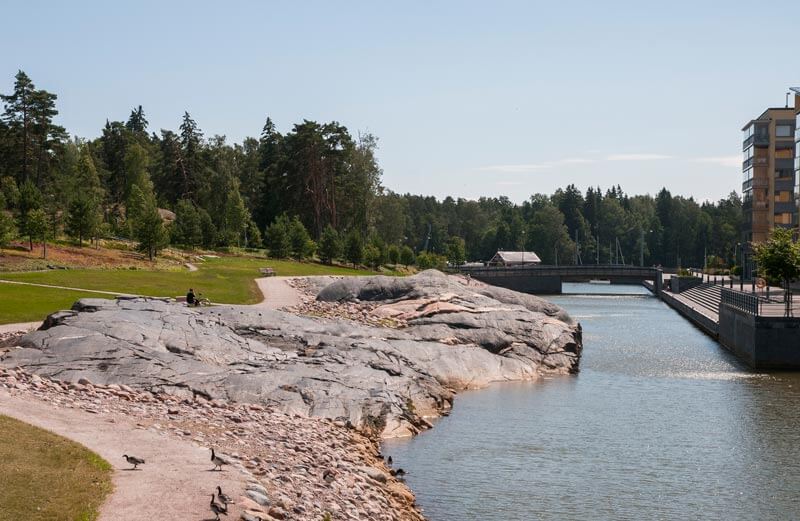
The natural look of the eastern shoreline is highlighted by embedded rocks with the appearance of ancient stones. The upper section of the canal also has separate plant pools in which bulrushes, sedges and common water-plantain grow. Bushgrass, lyme grass and bunchgrass grow along the sides.
At the end of the canal is a shallow paddling pool in the shape of a drop and with a fountain in the middle that invites children to play. The bottom of the pool is lined with blue-green concreted coloured with copper. Four wooden arched bridges cross the canal. The water from the paddling pool flows under “Heat Wave Bridge” (Hellesilta) to the lower section of the canal.
The next bridge is romantically named the “Bridge of Mists” (Sumujen silta). Here the water gushes down a broad two-metre waterfall. Beneath this waterfall is perhaps the most exciting element along the canal – a path that leads behind the waterfall to reveal what the world looks like through a veil of water.
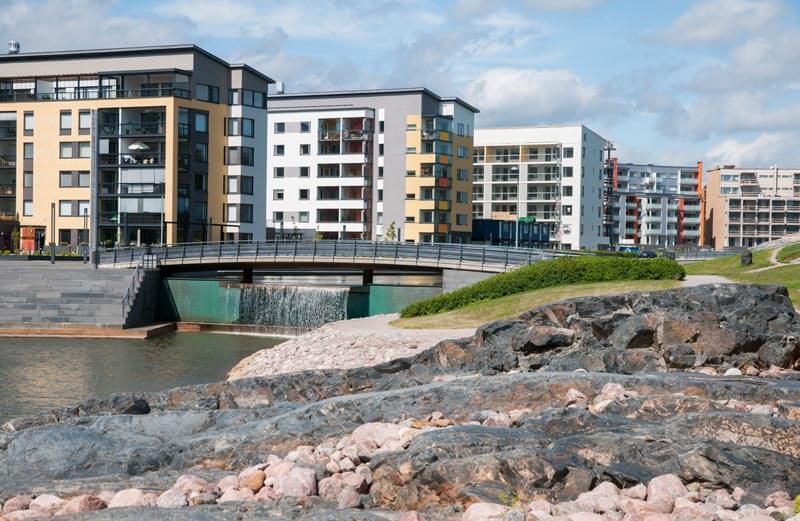
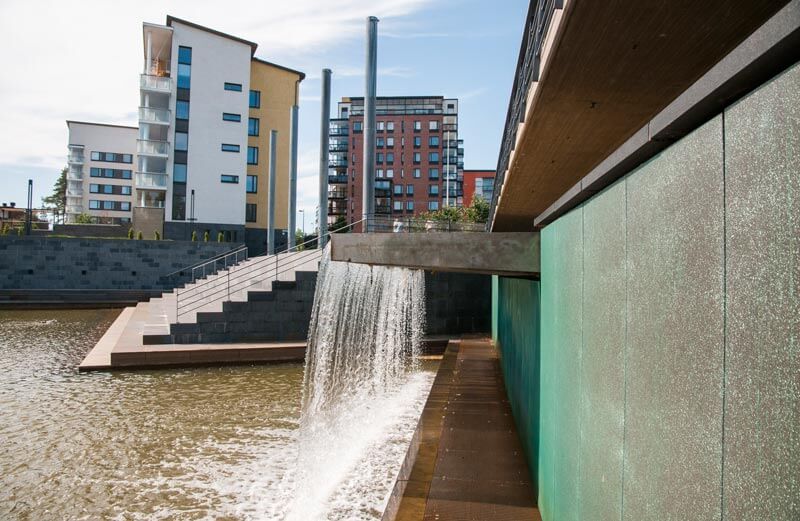
Along the western shore are comfortable sitting steps that lead down to the water. “Storm Square” (Myrskyjen aukio) is also situated on the western side and is bordered geometrically by trees. Either side of “Uutela Bridge” (Uutelansilta) are moorings for boats, and after the last bridge, “Sports Fisherman’s Bridge” (Urheilukalastajansilta) you get to the sea. Here you will find Aurinkolahti swimming beach, which is the longest beach in Helsinki at over 500 metres. The café at the beach is the same that is used in wintertime at Helsinki Icepark, the skating rink outside the Central Railway Station in the city centre. Nearby you will also find the cosy café, where you can enjoy delicious salmon soup and other snacks.
Kauniinilmanpuisto Fair Weather Park
On the eastern side of the canal is “Fair Weather Park”, which is bordered on the other side by the forest. The park is ideal for sunbathing and relaxing with its smooth rocks, green lawns, perennial flowers, and familiar Finnish trees and shrubs. The shoreline also features wooden piers for sitting. Three paths of differing lengths lead through the park parallel to the embankment. The paths are connected by steps that perpendicular to the canal.
Carpets of groundcover stonecrops, arctic bramble, geraniums and other perennials are planted across the park, forming a handsome and picturesque surface both in bloom and in their autumn colours.
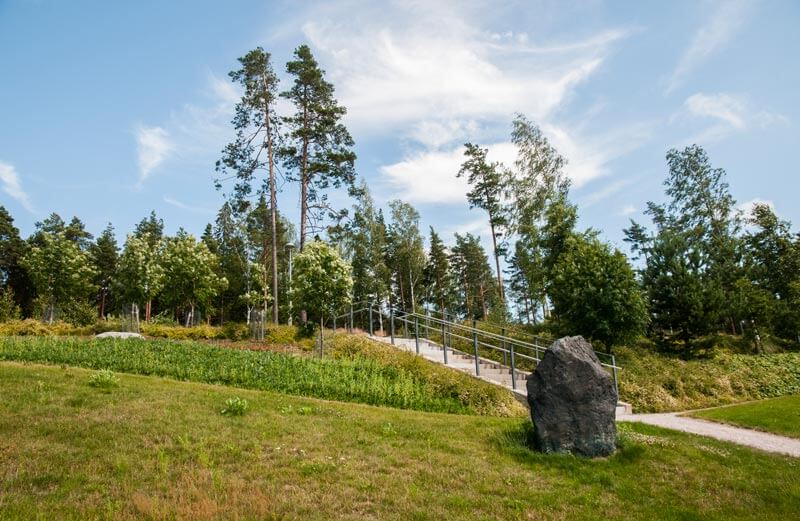
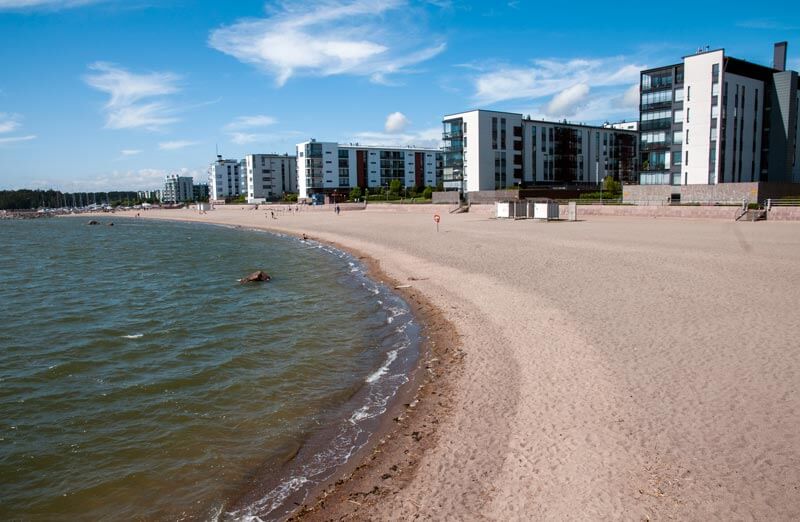
The winding rocks along the shoreline create their own natural addition to the park and are ideal for picnics and launching small boats into the canal. The fine smooth rocks were uncovered during the construction of the canal. Granite streaks can be seen in the volcanic rocks, as well as glacial scars from the Ice Age. There is even one boulder in the park that originates from Karelia, having come all the way in the lake that followed the Ice Age.
The park also features environmental art. The invitational competition that was organised by the City of Helsinki in 2003 was one by artist Anne Koskinen (1969–) with her proposal entitled “Stone”. The piece of art is based on three bronze sculptures moulded into the shape of actual stones dug up from the area. These stone-shaped sculptures function not only as individual works of art, but can also be used for sitting down and enjoying the scenery. If you knock on the rocks in the park you can tell which ones are works of art, but only by the sound!
The canal and its surroundings were designed by B&M Architects together with WSP Finland Oy. The design was based on the winning proposal by architect Timo Vormala in the international invitational competition that was held in 1996 for the Aurinkolahti neighbourhood.
In 2010 the park and canal were awarded the Environmental Construction Award.
Aurinkolahti swimming beach and sports park
The sand that was dredged up during the construction of Uutela Canal was used to create the longest swimming beach in Helsinki at over 500 metres.
The atmosphere here is very much like being abroad. From the beach you can see out to the horizon, and even the former name of the area was “Black Bay” (Mustalahti), “Sun Bay” (Aurinkolahti) suits it much better. The small islet in the bay is called Viilipunkka. There was once a flagpole on the islet that local residents would like restored. Public services along the beach include lifeguards, changing booths and a café that is used in wintertime at the Helsinki Icepark skating rink outside the Central Railway Station in the city centre. The public toilets are also mobile.
In August 2009 a new sports park opened next to the beach with high-quality exercise equipment suitable for users of all ages. The sports park covers an area of 7500 square metres. There is a separate play area for children and a sports field for playing football, basketball and floorball. There is also a sandy area that is suitable for playing pétanque and for aerobics. The sports park is maintained by the Helsinki City Sports Department and is free of charge.


